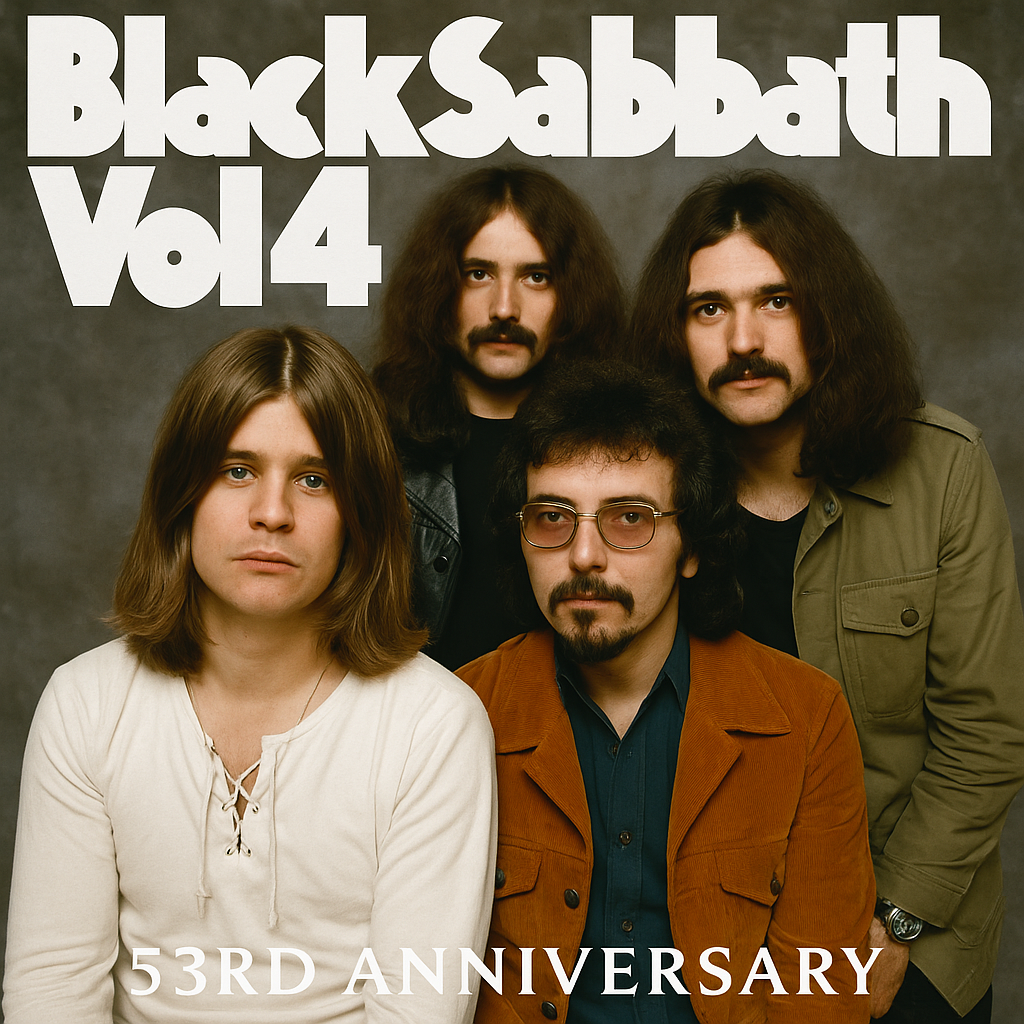
HISTORICAL MOMENT: 53rd Anniversary — Black Sabbath’s Vol. 4 and the Dawn of Heavy Metal’s Darker Age
On September 25, 1972, Black Sabbath released their fourth studio album, Vol. 4, a record that cemented their role as the architects of heavy metal and pushed the boundaries of what rock music could be. Now marking its 53rd anniversary, the album stands not just as another milestone in the band’s career, but as one of the most influential works in the entire genre.
The cover itself became iconic—a stark monochrome image of Ozzy Osbourne on stage, arms raised high, drenched in light and shadow. It captured the essence of Black Sabbath’s live energy: a blend of mysticism, menace, and sheer power. Inside the grooves, the album was a reflection of both experimentation and excess, driven by the band’s increasingly complex sound and, infamously, their heavy reliance on cocaine during the recording sessions.
Musically, Vol. 4 expanded Sabbath’s sonic universe. Tracks like “Tomorrow’s Dream” and “Supernaut” showcased guitarist Tony Iommi’s unmistakable riffs—dark, jagged, and hypnotic—while bassist Geezer Butler and drummer Bill Ward provided the thunderous rhythm section that gave Sabbath their seismic weight. Ozzy’s haunting vocals tied it all together, his delivery equal parts eerie and urgent.
One of the standout moments was “Changes,” a piano-led ballad unlike anything fans had heard from the band before. Stripped of distortion and aggression, it revealed a vulnerable, almost tender side of Sabbath, proving they were more than just doom and volume. Meanwhile, the instrumental “Laguna Sunrise” demonstrated Iommi’s gift for melody, inspired by a quiet morning in California—a sharp contrast to the darkness usually associated with the band.
Yet it was songs like “Wheels of Confusion” and “Snowblind” that defined the record’s legacy. “Snowblind,” in particular, became infamous for its references to cocaine, a theme that mirrored the excesses of the early 1970s rock scene. While controversial, it was also brutally honest, capturing the hedonistic undercurrent of the era.
Upon release, Vol. 4 received mixed reviews from critics, some bewildered by its shifts in tone. Fans, however, embraced it wholeheartedly, and over time the album has been recognized as a cornerstone of metal history. Its daring experimentation helped shape the genre’s future, influencing bands from Metallica and Pantera to countless underground acts that drew inspiration from Sabbath’s blend of heaviness and atmosphere.
The record marked a turning point for Black Sabbath themselves. No longer just the creators of a new sound, they were now global icons, navigating the pressures of fame and the demands of innovation. Vol. 4 was both a triumph and a foreshadowing of the struggles to come, as the band wrestled with substance abuse and the weight of their own legend.
Fifty-three years on, the album’s impact has not diminished. Vol. 4 remains a testament to the restless creativity of a band unafraid to experiment, to blur the lines between beauty and darkness, melody and chaos. It captured the essence of heavy metal at its formative peak—a genre defined not only by power, but by the courage to push beyond convention.
As fans revisit the album today, the haunting image of Ozzy Osbourne with his hands raised still speaks volumes. It is not just a snapshot of a moment—it is the embodiment of a movement, a reminder of the night heavy metal found both its voice and its enduring soul.